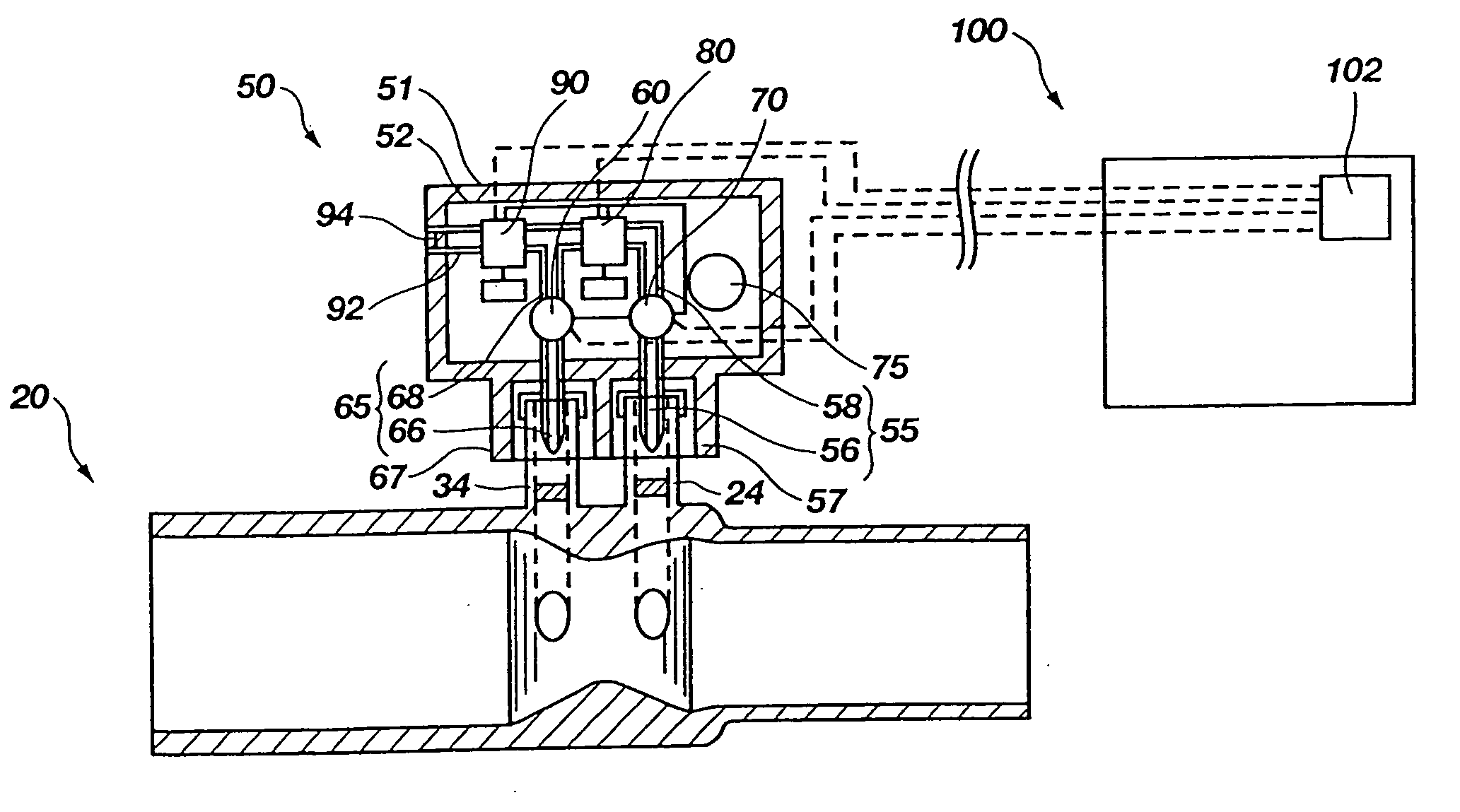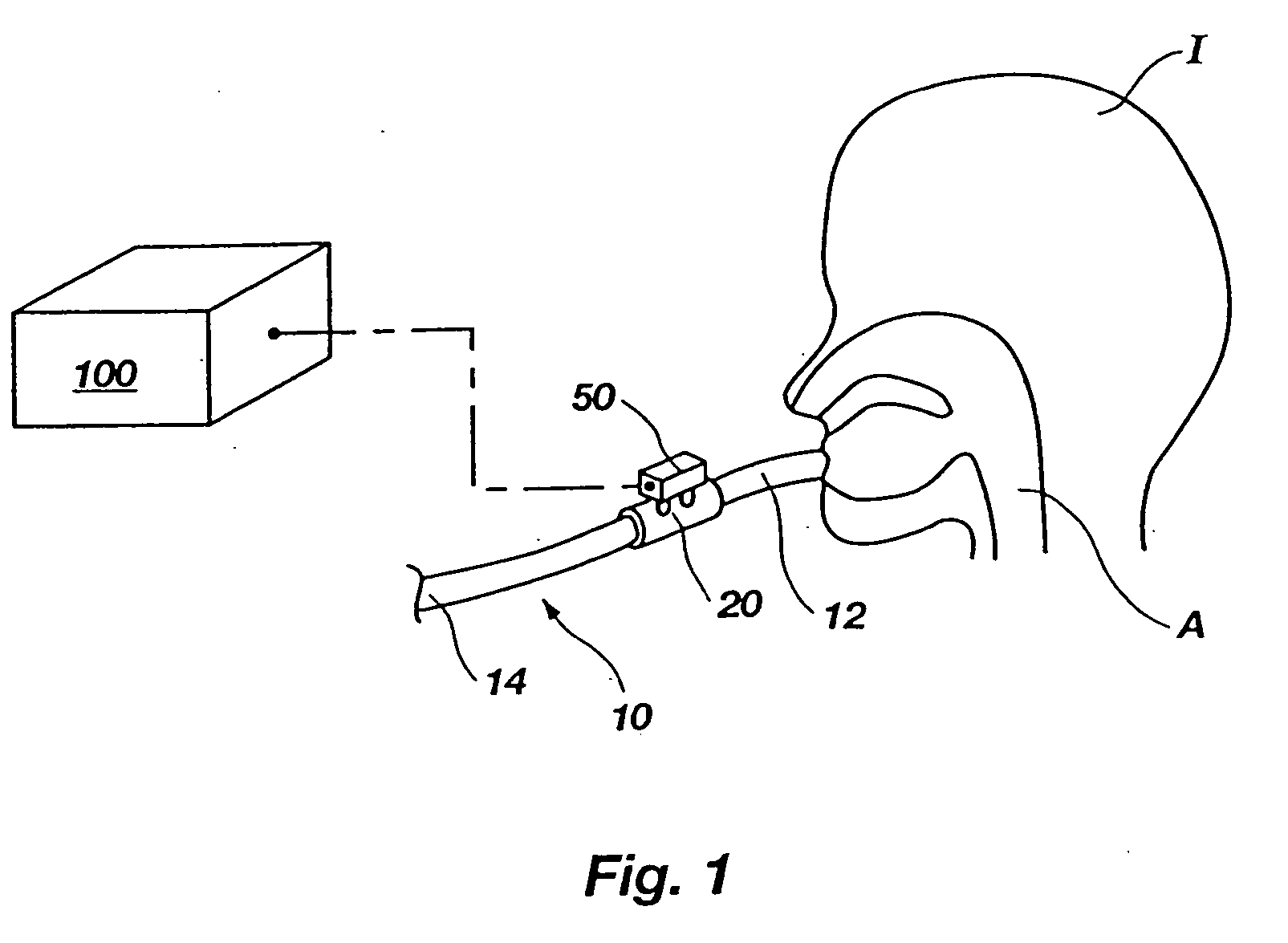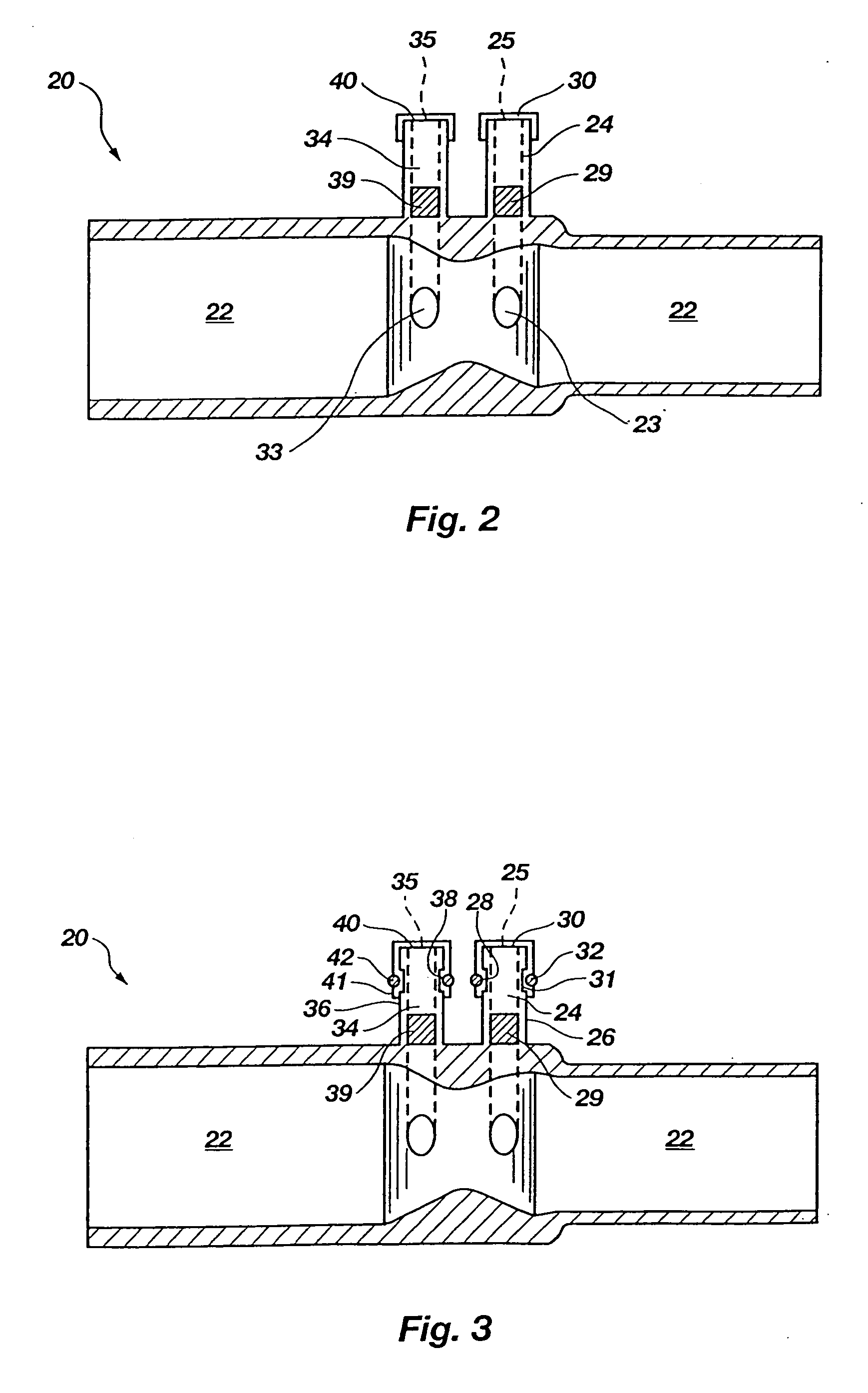Portable pressure transducer, pneumotach for use therewith, and associated methods
a technology of pressure transducer and portability, which is applied in the direction of pressure difference measurement between multiple valves, instruments, diagnostic recording/measure, etc., can solve the problems of difficult precise estimation of wasted and inhaled portions of compression volume, significant difference between pressure, flow, and volume of gas, and the inability of pressure flow sensors to suffer deficiencies, etc., to achieve wide manufacturing tolerances, facilitate formation and maintenance, and reduce the cost of the pneumotach
- Summary
- Abstract
- Description
- Claims
- Application Information
AI Technical Summary
Benefits of technology
Problems solved by technology
Method used
Image
Examples
Embodiment Construction
[0032] With reference to FIG. 1, a respiratory conduit 10 is depicted. Respiratory conduit 10 may comprise a breathing circuit which includes an endotracheal tube, a nasal canula, or any other conduit that is configured to communicate with the airway A of an individual I. As depicted, one end 12 of respiratory conduit 10 is placed in communication with airway A, while the other end 14 of respiratory conduit 10 opens to the atmosphere, a source of gas to be inhaled by individual I, or a ventilator, as known in the art. Positioned along its length, respiratory conduit 10 includes at least one airway adapter, in this case a pneumotach 20, which is a component of a type of pressure sensor. Also shown in FIG. 1 is a portable pressure transducer 50 coupled with and in flow communication with pneumotach 20. Portable pressure transducer 50 may, in turn, communicate electronically with a computer, such as a pressure or flow monitor 100, as known in the art.
[0033] Referring now to FIG. 2, th...
PUM
| Property | Measurement | Unit |
|---|---|---|
| pressures | aaaaa | aaaaa |
| pressure | aaaaa | aaaaa |
| pressure | aaaaa | aaaaa |
Abstract
Description
Claims
Application Information
 Login to View More
Login to View More - R&D
- Intellectual Property
- Life Sciences
- Materials
- Tech Scout
- Unparalleled Data Quality
- Higher Quality Content
- 60% Fewer Hallucinations
Browse by: Latest US Patents, China's latest patents, Technical Efficacy Thesaurus, Application Domain, Technology Topic, Popular Technical Reports.
© 2025 PatSnap. All rights reserved.Legal|Privacy policy|Modern Slavery Act Transparency Statement|Sitemap|About US| Contact US: help@patsnap.com



